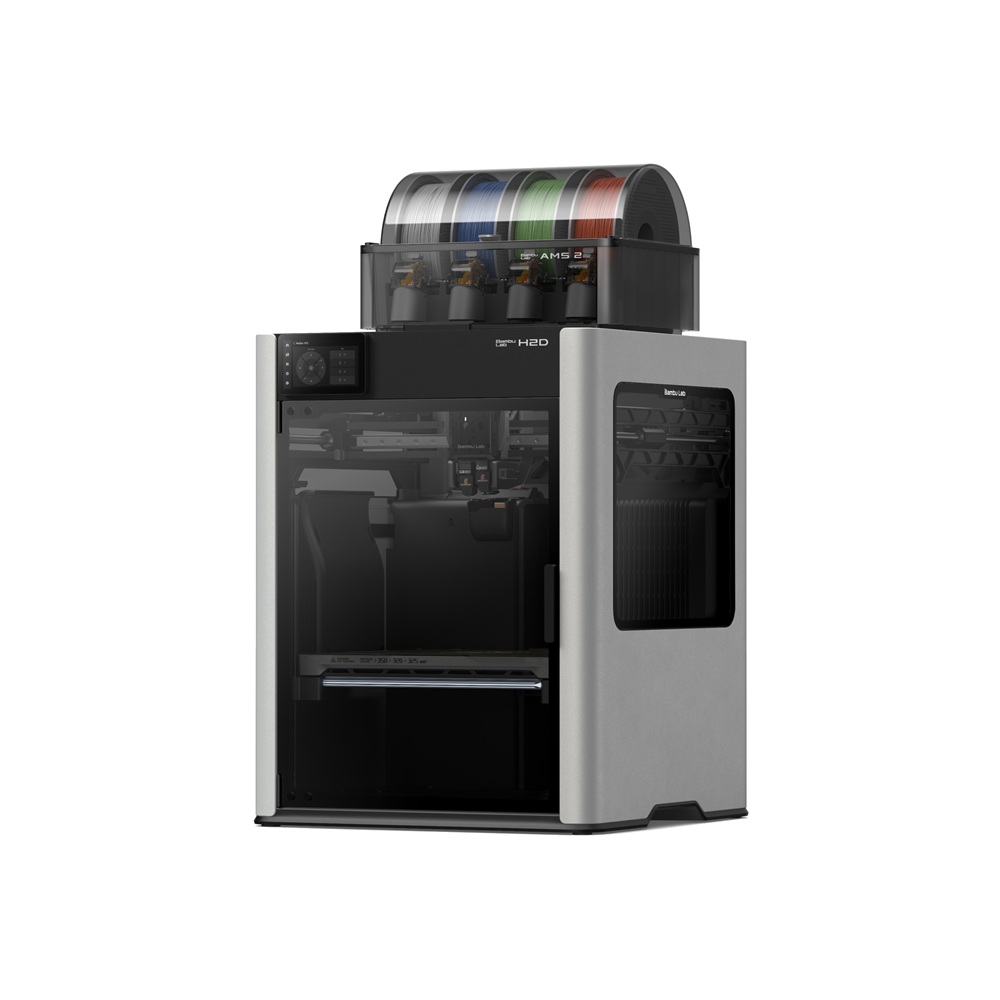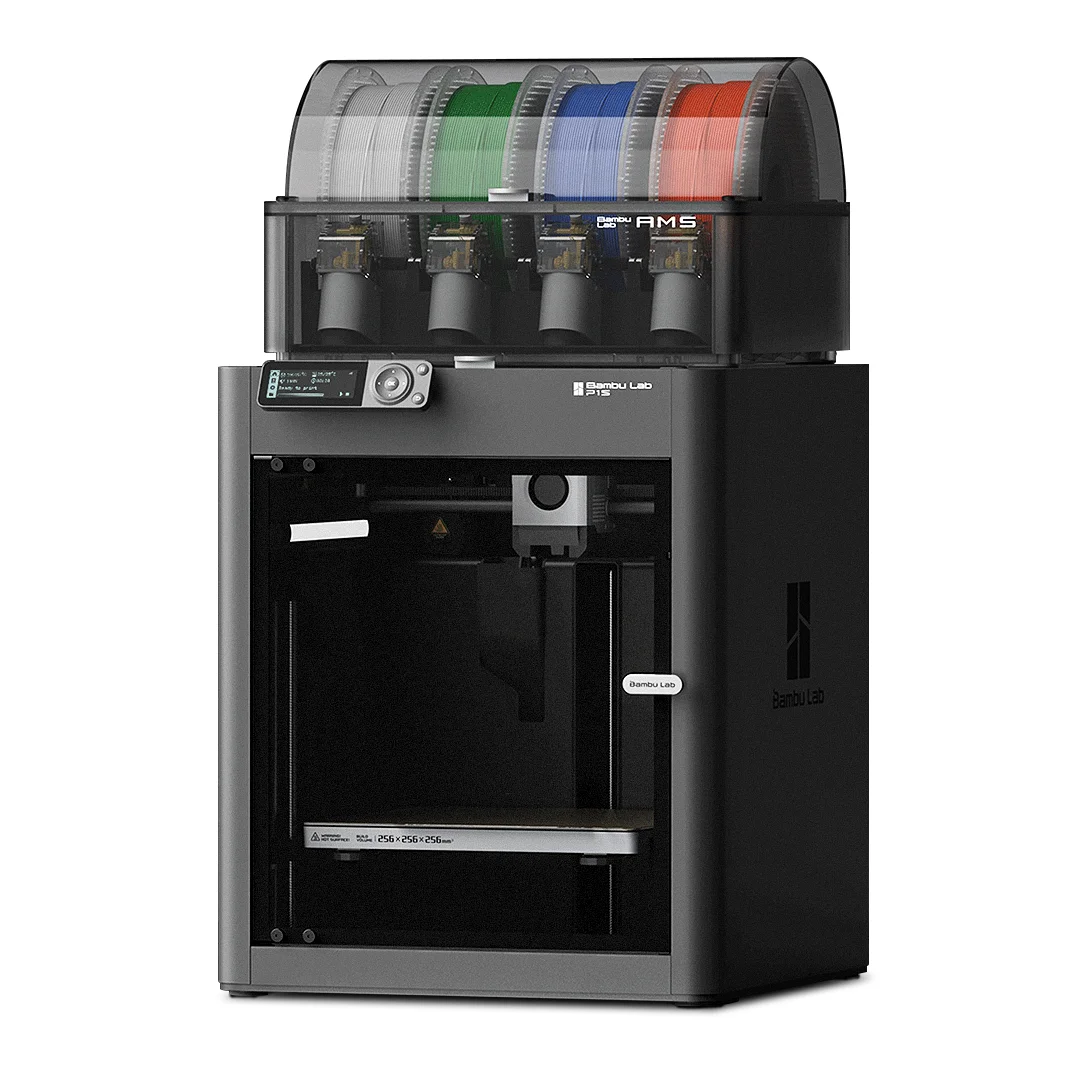Compare H2D vs P1S
Comparison between the best 3D printers
Choose the best 3D printer at the best price. The cheapest 3D printers are here.
Buy a 3D printer here with 3D Fila.
 |
 |
|
| Model | H2D |
P1S[BUY P1S] |
| Printing Material | Filament | Filament |
| Buy Filament for Bambu Lab H2D | Buy Filament forBambu Lab P1S | |
| Estimated price | $1899,00 | $949,00 |
| Manufacturer | Bambu Lab | Bambu Lab |
| Release Year | 2025 | 2023 |
| Print Volume [mm] | 350x320x325 | 256x256x256 |
| Printer Size [mm] | 492x514x626 | 389x389x458 |
| Weight [kg] | 42,3 | 12,95 |
| Power Loss Recovery | YES | YES |
| Enclosed printer | YES | YES |
| Bed Leveling | Automatic | Automatic |
| Filament End Sensor | YES | YES |
| Bed type | Heated | Heated |
| Power supply system | Direct Drive | Direct Drive |
| Standard nozzle | 0,4 | 0,4 |
| Maximum Nozzle Temperature [°C] | 350 | 300 |
| Maximum Bed Temperature [°C] | 120 | 100 |
| Maximum printing speed [mm/s] | 600 | 500 |
| Filament holder | YES | YES |
| Camera for supervision | YES | YES |
| Recommended filaments | PLA, PETG, ABS, ASA, TPU, PVA, Nylon (PA) | PLA, PETG, TPU, PVA, PA, PA-CF, Nylon, PC |
| Recommended slicers | Bambu Studio | Bambu Studio, Super Slicer, Cura, Prusa Slicer, Orca |
| Maximum Resolution [mm] | 0,01 | 0,1 |
| Processor | Quad ARM A7 1.2 GHz | |
| Display | Touchscreen 5'' | Touchscreen 5'' |
| Power Supply | 350 W | |
| Connectivity | Wifi, Bambu bus, Cartão SD | Wifi, Bambu bus, Cartão SD |
| Operating systems | Windows, Mac, Linux | Windows, Linux, Macbook |
| Date of registration in the system | 2025-03-31 | 2024-04-11 |
| Release date | 2025 | 2023 |
| Extra features | Bambu Labs H2D combines high-speed 3D printing with a chamber heated up to 65 °C, dual extrusion with automatic nozzle switching, an AMS for filament drying and exchange, and AI sensors that detect failures. It offers optional laser and digital cutting capabilities, features intelligent calibration through computer vision, vibration control, enhanced fire safety, and real-time camera monitoring. | The Bambu Lab P1S stands out for its out-of-the-box practicality, eliminating the need for manual adjustments with automatic calibrations such as bed leveling and vibration compensation. It features multicolor printing capability through the AMS system, allowing up to 16 colors when connecting four AMS units. With an advanced control algorithm, the P1S offers fast printing speeds without sacrificing quality. Equipped with modern features such as filament end sensor, semi-automatic belt tension, direct extruder, welded frame and all-metal hotend, along with a fully enclosed chamber, the P1S promotes a superior printing experience, supporting a wide range of materials. |
| Support for multiple colors and materials (AMS and CFS) | YES | YES |
Notes * |
||
| Cost-benefit | 7 / 10 | 7 / 10 |
| Hardware | 8 / 10 | 6.4 / 10 |
| Tela | . | . |
| Print volume | 4 / 10 | 4 / 10 |
| Performance | 5 / 10 | 4 / 10 |
| [BUY P1S] |
Conclusion |
| In comparing the Bambu Lab H2D and P1S 3D printers, several key factors emerge that may influence a buyer's decision based on their specific needs and budget. The H2D, despite a higher price point, offers advanced features such as higher maximum nozzle and bed temperatures, greater print volume, and faster maximum printing speeds. It is designed for users seeking high performance and versatility, making it suitable for more demanding projects that require precision and the ability to utilize a wider range of materials. Additionally, its advanced functionality, including dual extrusion and intelligent calibration, positions it as a robust choice for professional or serious hobbyist users who prioritize efficiency and quality. On the other hand, the P1S presents a more cost-effective option, maintaining a competitive standard of performance while being more accessible in terms of price. Its user-friendly features, such as automatic calibration and multicolor printing capabilities, make it an excellent choice for beginners or those who prefer a printer that minimizes setup time and complexity. The P1S still supports various materials and offers a solid printing experience, albeit with a slightly smaller print volume and lower maximum performance metrics than the H2D. Ultimately, the decision between the two models should consider the user's level of expertise, required print quality, material flexibility, and budget. For those who demand cutting-edge technology and superior specifications, the H2D is a worthy investment. Conversely, the P1S serves as a practical choice for those who prioritize ease of use and cost-effectiveness without compromising too much on quality and functionality. |

